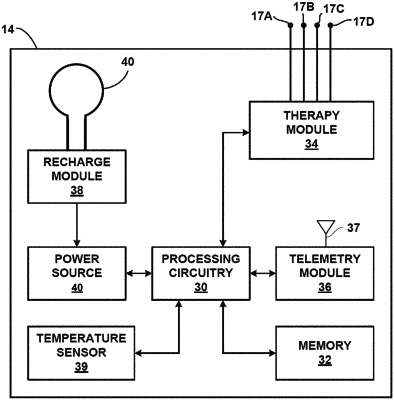| CPC H02J 50/80 (2016.02) [A61N 1/3787 (2013.01); H02J 7/0047 (2013.01); H02J 7/02 (2013.01); H02J 50/10 (2016.02)] | 26 Claims |

|
1. A device comprising:
a power transmitting unit configured to wirelessly transfer electromagnetic energy to a power receiving unit; and
processing circuitry configured to:
compute a target output power deliverable by the power transmitting unit for a first duration;
control the power transmitting unit to output the target output power based in part on a heat limit;
calculate an energy transfer efficiency to the power receiving unit;
update an adjustment factor based on the calculated energy transfer efficiency; and
apply the adjustment factor to the heat limit for a subsequent duration.
|